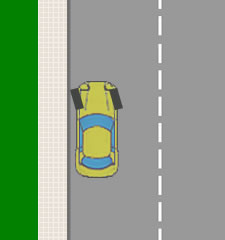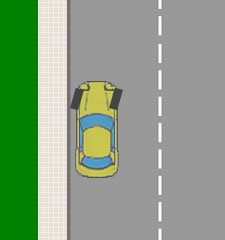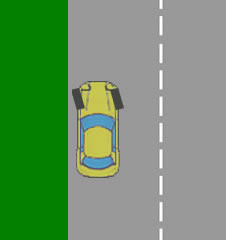Modern vehicles offer more reliable components than those of previous years, they still do of course fail from time to time.
If your parking brake fails whilst you have left your vehicle parked on a hill, it can potentially be lethal for other road users or pedestrians.
By making a couple of simple adjustments to the front wheels whilst parking on a hill, a failure of handbrake components or rear brakes will help to resolve a potentially dangerous situation into a minor one.
This tutorial explains how to park on a hill safely, to ensure your vehicle remains stationary once left alone, along with diagrams.

Parking facing downhill
When parking on the left facing downhill with or without a kerb / curb, turn the front wheels towards the kerb. This will keep the vehicle from rolling into traffic if the brakes become disengaged. If there is no kerb present, the vehicle will roll onto the verge instead of the rolling into the road.

Parking facing uphill with a kerb
If parked on the left facing uphill, turn the wheels to the right towards the road. If the parking brakes fail and the car rolls backwards, the front tyre will hit the kerb and stop the vehicle rolling backwards further.

Parking facing uphill without a kerb
If you are parked facing uphill and there is no kerb, turn the wheels to the left. If your parking brakes fail, the vehicle will roll out of the road and into the verge.
If parking uphill or downhill but on the right hand side of the road, simply turn the wheel in the opposite direction to that parked on the left.
Parking uphill or downhill
Additional safety measures can be taken when parking either uphill or downhill. If in an automatic vehicle, always leave the transmission lever in park. If driving a manual transmission, leave the gear lever in first. This will keep the engine engaged and prevent the vehicle from rolling.
